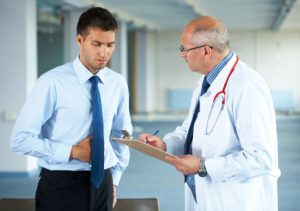
Here we will explain the many causes of stomach pain after eating, along with home remedies you can try in order to reduce your post-meal discomfort.
What are the causes of stomach pain after eating?
Overeating:
Sometimes stomach pain after eating is simply due to overeating. Maybe you hit up a buffet or simply couldn’t say no to a second serving. When we overeat, it takes out stomachs longer to break down the food, so it’s important you stay within your limit to avoid stomach pain after eating.
Hot or spicy foods:
Consuming hot or spicy foods can irritate a sensitive stomach, thus causing pain. You may need to turn down the heat on your next dish to avoid this stomach pain afterwards.
Food intolerance/lactose intolerance:
When are bodies don’t have the enzymes to break down certain enzymes present in food – for example, lactose in dairy products is a common one – such intolerance can then result in symptoms like stomach pain, accompanied by bloating, gas, constipation, or diarrhea. It’s important to document what you are eating and when the pain occurs to help you narrow down on your food intolerance. Furthermore, you may want to try an elimination diet and slowly bring back trigger foods back one by one.
Food allergies:
Similar to intolerances, food allergies can cause stomach pains after eating. Common food allergies are dairy, starches, spices, and grains.
Celiac disease:
Celiac disease is gluten intolerance, so the stomach pain after eating may occur when you consume a meal that contains gluten. Once again, documenting your meals or trying an elimination diet may help you narrow down on your cause. A doctor can also help confirm celiac disease diagnosis.
Food poisoning:
If you ate something that was contaminated not only will you experience stomach pains, but bloating, diarrhea, vomiting, and even a fever may follow. Food poisoning is temporary, and you will have to let it to run its course. Drink plenty of fluids to prevent dehydration.
Peptic ulcer:
A peptic ulcer occurs when bacteria eat through the stomach lining. Don’t fret – this condition can be treated with antibiotics.
Gallstones:
Bile is released after eating to aid in digestion, but if gallstones are preventing bile from being released, you could experience stomach pains after eating. The pain would be situated in the right side of your back.
Blocked blood vessels:
This happens when cholesterol blocks a blood vessel that interrupts the digestive process, resulting in stomach pains after eating. If left untreated, this condition can be life-threatening. Have your cholesterol checked regularly and ensure you are taking the necessary steps to lower your cholesterol.
Intestinal obstruction:
If a part of the intestine is blocked it can prevent food from passing, causing pain after eating. The pain can linger for hours after the meal has been consumed. It’s important you have an obstruction cleared to prevent complications.
Appendicitis:
Stomach pain due to appendicitis are felt in the lower right side of the abdomen. This pain worsens after eating and can be accompanied by a mild fever and vomiting.
Irritable bowel syndrome:
Symptoms of irritable bowel syndrome include stomach pains after eating, bloating, gas, diarrhea, and constipation.
Pancreatitis:
If pain occurs after a large meal and lasts for six hours or more, it could indicate pancreatitis. Pain will begin in the upper left side of the abdomen and can spread to the back.
Diverticulitis:
This is the formation of cysts or pouches along the bowel wall, which become infected. Severe cramping occurs after a meal, and medical intervention is required immediately.
Gastroenteritis/stomach flu:
Like food poisoning, these conditions must run their course and are caused by eating contaminated food or beverages.
Constipation:
If you can’t go or haven’t gone in a while, your stomach may hurt after a meal because your food and waste is not being released.
Pelvic inflammatory disease (PID):
PID is caused when an infection affects any of the organs in the reproductive system, including the ovaries, uterus, or fallopian tubes. This inflammation is caused by a bacterial infection, which is typically acquired through sexual intercourse. As your stomach or intestines become full after eating, it can put pressure on your inflamed organs, causing pain.
Home remedies to get rid of stomach ache after eating
- Drink plenty of water and avoid large meals. When you are hungry, start with bland, smaller meals.
- Try an over-the-counter antacid.
- Place a hot compress over the stomach region.
- Gently massage your stomach.
- Eat yogurt regularly.
- Avoid solid foods if you’ve been vomiting.
- Avoid greasy, fatty, processed foods.
- Drink herbal tea.
- Don’t take aspirin, narcotics, or anti-inflammatories until you have determined the cause of your digestive distress.
- Don’t drink alcohol.
- Don’t smoke.
When to see a doctor for stomach pain after eating
You should see a doctor for stomach pain after eating if the pain is progressively worsening even if you’ve stopped eating, if the pain is preventing you from sitting still, if accompanying symptoms like fever or vomiting are present, if your diarrhea hasn’t subsided after a few days, and if your stool has changed color.
Furthermore, you should see your doctor if stomach pains occur after each meal and if you begin to experience symptoms of dehydration, which include dry mouth, dizziness, dry skin, and fatigue.
Related: Lower abdominal pain in women: Causes and treatments